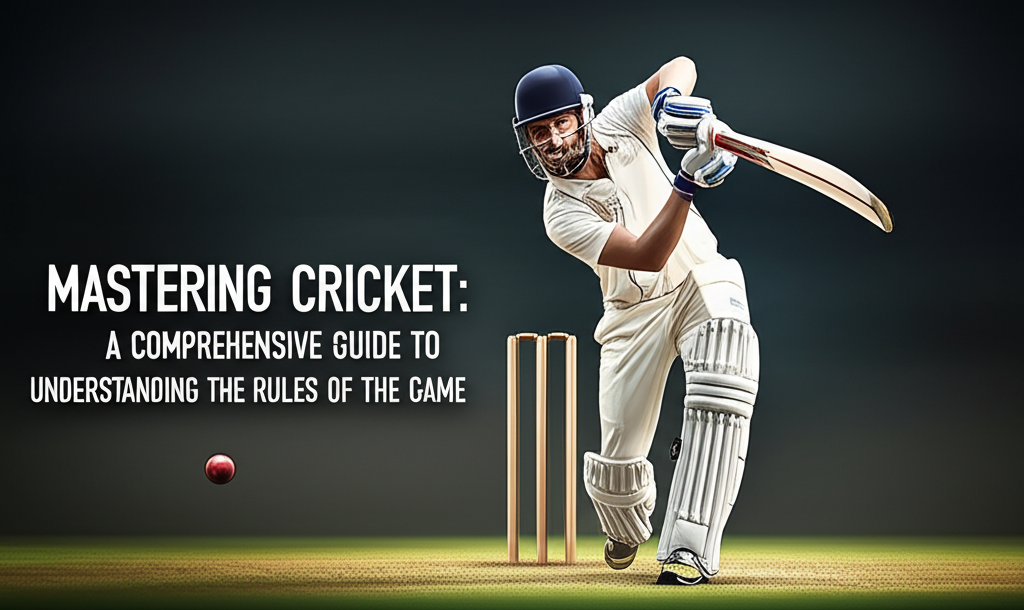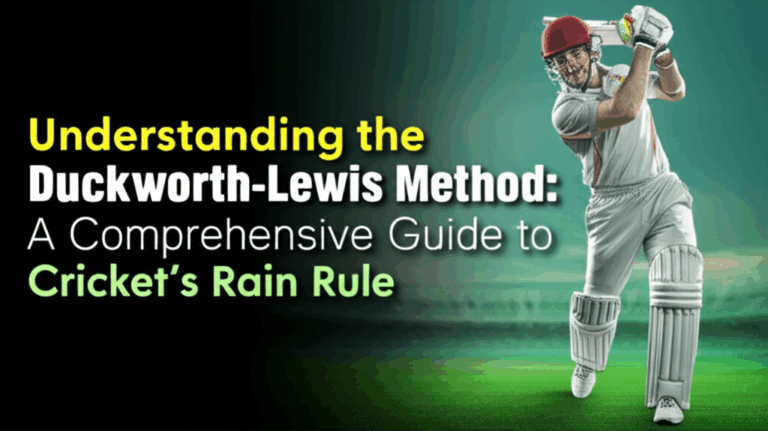
Cricket is more than just a game; it’s a rich tapestry of history, culture, and passion that spans continents and generations. Whether you’re a curious newcomer or a seasoned fan looking to brush up on the rules, understanding cricket can feel daunting. With various formats, intricate rules, and a distinct culture surrounding the sport, many enthusiasts often find themselves confused about the game’s finer details. But don’t worry! In this comprehensive guide, we will break down the rules of cricket in a way that’s engaging and easy to understand.
By the end of this article, you will have a solid grasp of the fundamental principles of cricket, the roles of players, the various formats, and the nuances that make this sport so captivating. We’ll start with the basics and gradually delve into more complex aspects, ensuring that you not only learn the rules but also appreciate the strategy and excitement that cricket offers. So, let’s get started on this journey to mastering cricket!
Understanding Cricket: The Basics
At its core, cricket is a bat-and-ball game played between two teams, usually consisting of eleven players each. The primary objective is to score more runs than the opposing team. The game is played on an oval-shaped field, with a rectangular 22-yard pitch at its center. Each team takes turns batting and fielding, and the team with the most runs at the end of the match wins. Sounds simple, right? But let’s break it down further.
The Playing Field
The cricket field is divided into several key areas:
- The Pitch: The central strip where most of the action occurs. It’s where the bowler delivers the ball to the batsman.
- The Creases: Lines at each end of the pitch that define the areas where the batsman stands and the bowler delivers the ball.
- The Boundary: The perimeter of the field. Hitting the ball beyond this line scores runs.
Basic Terminology
Familiarizing yourself with cricket terminology can greatly enhance your understanding. Here are some fundamental terms:
- Run: The basic unit of scoring, achieved by batsmen running between the wickets.
- Wicket: Refers to either the physical structure comprising three stumps and two bails or the dismissal of a batsman.
- Bowler: The player who delivers the ball to the batsman.
- Batsman: The player who attempts to score runs by hitting the ball.
- Out: When a batsman is dismissed, via various means such as being bowled, caught, or run out.
Key Components of the Game
Now that we’ve covered the basics, let’s dive into the key components of cricket that every player and fan should understand.
The Teams
Each team in cricket consists of 11 players, with roles typically divided into:
- Batsmen: Players focused on scoring runs.
- Bowler: Players who specialize in delivering the ball effectively to dismiss batsmen.
- All-rounders: Players who excel in both batting and bowling.
- Wicketkeeper: A specialized fielder positioned behind the stumps, responsible for catching the ball and stumping batsmen.
The Formats of Cricket
Cricket is played in several formats, each with its unique set of rules and style of play. The most common formats are:
| Format | Duration | Overs | Key Features |
|---|---|---|---|
| Test Cricket | Up to 5 days | Unlimited | Two innings per team, traditional format |
| One Day Internationals (ODIs) | 1 day | 50 overs | Limited overs, 50 overs per side |
| T20 Internationals | 3 hours | 20 overs | Fast-paced, high-scoring games |
Rules of the Game
Understanding the rules of cricket is crucial for enjoying the game fully. Here’s a breakdown of the essential rules you need to know.
Scoring Runs
Runs can be scored in several ways:
- Running between the wickets: Batsmen run from one end of the pitch to the other.
- Boundaries: A ball hit over the boundary without touching the ground scores four runs. If it crosses the boundary on the full, it scores six runs.
- No balls and wides: These are extra deliveries that also add runs to the batting team’s score.
Dismissals
A batsman can be dismissed in various ways. Here are the most common methods:
- Bowled: The ball hits the stumps and dislodges the bails.
- Caught: A fielder catches the ball on the full after the batsman hits it.
- Run Out: A batsman fails to reach the crease before the fielding team hits the stumps.
- LBW (Leg Before Wicket): The batsman is out if the ball would have hit the stumps but hits the batsman’s leg instead.
Innings
Each team has one or two innings, depending on the format. During an innings, the batting team aims to score as many runs as possible while the fielding team tries to dismiss the batsmen. After all batsmen are out or a set number of overs are bowled, the innings ends.
Overs
An over consists of six legal deliveries bowled by a bowler. After each over, a different bowler must bowl from the opposite end of the pitch. This rotation keeps the game dynamic and encourages various bowling styles.
Benefits and Importance of Understanding Cricket Rules
Understanding the rules of cricket not only enhances your enjoyment of the game but also allows you to appreciate the strategy and skills involved. Here are some benefits:
- Enhances Viewing Experience: Knowing the rules deepens your engagement during matches, enabling you to follow the action more closely.
- Improves Playing Skills: Whether you’re playing casually or competitively, understanding the rules is essential for playing effectively.
- Fosters Community: Cricket often brings people together, and a shared understanding of the game enhances social interactions.
Practical Applications: How to Use Your Knowledge of Cricket Rules
Now that we’ve covered the rules and components of cricket, let’s explore how you can apply this knowledge practically.
Playing Cricket
Armed with a solid understanding of cricket rules, you can confidently join a match or organize one with friends. Start with friendly games, focusing on the basic rules. Gradually, as you become more comfortable, you can implement more complex strategies and techniques.
Watching Matches
When watching cricket, whether on television or in person, your understanding of the rules will enhance your viewing experience. You’ll be able to appreciate strategic decisions made by players and coaches, understand umpire calls, and engage in discussions with fellow fans.
Coaching and Mentoring
If you’re passionate about cricket, consider sharing your knowledge by coaching younger players or organizing community events. Teaching the game not only helps others learn but also reinforces your own understanding.
Frequently Asked Questions
What are the basic rules of cricket?
The basic rules of cricket involve two teams of eleven players each, with one team batting and the other bowling and fielding. The batting team aims to score runs, while the bowling team tries to dismiss the batsmen. Runs can be scored by running between the wickets or hitting boundaries. A batsman is out through methods like being bowled, caught, or run out. An innings ends when all batsmen are out or a predetermined number of overs have been bowled.
How many overs are in a cricket match?
The number of overs in a cricket match varies by format. In Test matches, there is no limit on the number of overs, as each team bats twice. In One Day Internationals (ODIs), each team bats for a maximum of 50 overs. In T20 matches, each team has 20 overs. This structure impacts the game’s pace and strategy significantly.
What is the role of the wicketkeeper?
The wicketkeeper is a specialized fielder positioned behind the stumps at the bowler’s end. Their primary roles include catching balls that the batsman misses, stumping batsmen who advance down the pitch, and assisting in run-out situations. A good wicketkeeper can significantly influence the outcome of a game with their quick reflexes and sharp decision-making skills.
How is a player out in cricket?
A player can be out in several ways:
- Bowled: The ball hits the stumps and dislodges the bails.
- Caught: A fielder catches the ball on the full after the batsman hits it.
- Run Out: The batsman fails to reach the crease before the fielding team hits the stumps.
- LBW: The ball would have hit the stumps, but instead, it strikes the batsman’s leg.
Understanding these dismissal methods is crucial for both players and spectators.
What is the significance of the crease in cricket?
The crease marks are crucial in cricket for defining the areas where the batsman and bowler stand. There are two main creases: the popping crease, which indicates where the batsman must reach to be safe from being run out, and the bowling crease, which the bowler must not cross while delivering the ball. The creases play a vital role in the dynamics of the game and the tactics employed by both teams.
Can a match end in a tie?
Yes, a cricket match can end in a tie, particularly in limited-over formats like ODIs and T20s. In Test matches, if both teams have scored the same number of runs, the match is considered a draw. However, in some limited-overs competitions, there are provisions for a Super Over or a tiebreaker to determine a winner if the match is tied.
Conclusion
Mastering cricket requires not just an understanding of the rules but also an appreciation for the strategy, skill, and passion that define the game. We’ve journeyed through the fundamentals, explored key components, and highlighted practical applications of your newfound knowledge. By engaging with cricket—whether as a player, spectator, or coach—you’re joining a global community that celebrates this timeless sport.
Now that you’re equipped with the essentials of cricket, I encourage you to put your knowledge into practice. Attend a local match, play a friendly game, or simply enjoy watching your favorite teams battle it out. Remember, cricket is not just about the rules; it’s about the excitement, the camaraderie, and the moments that create unforgettable memories. So grab your bat and ball, and let the spirit of cricket inspire you!




